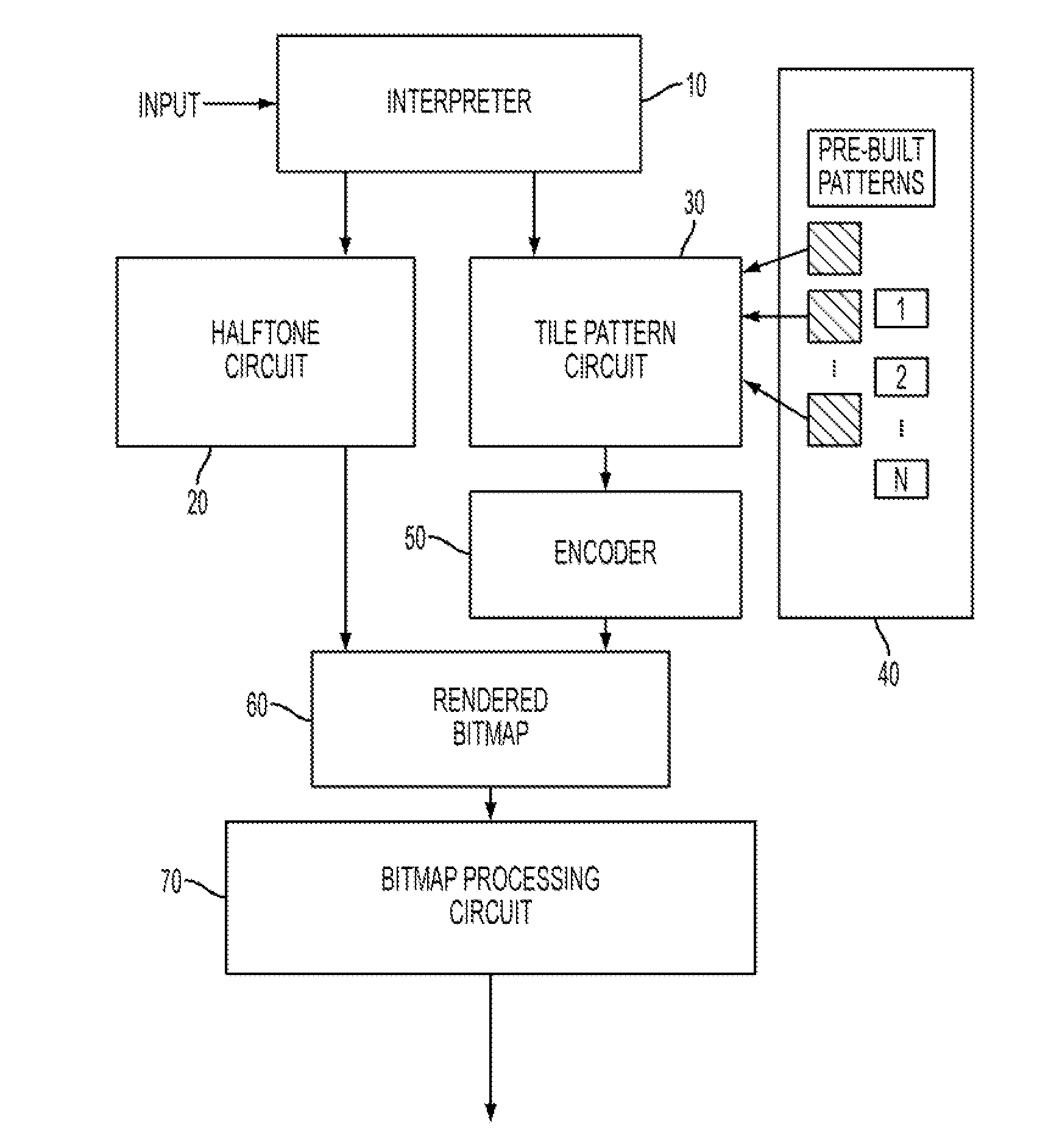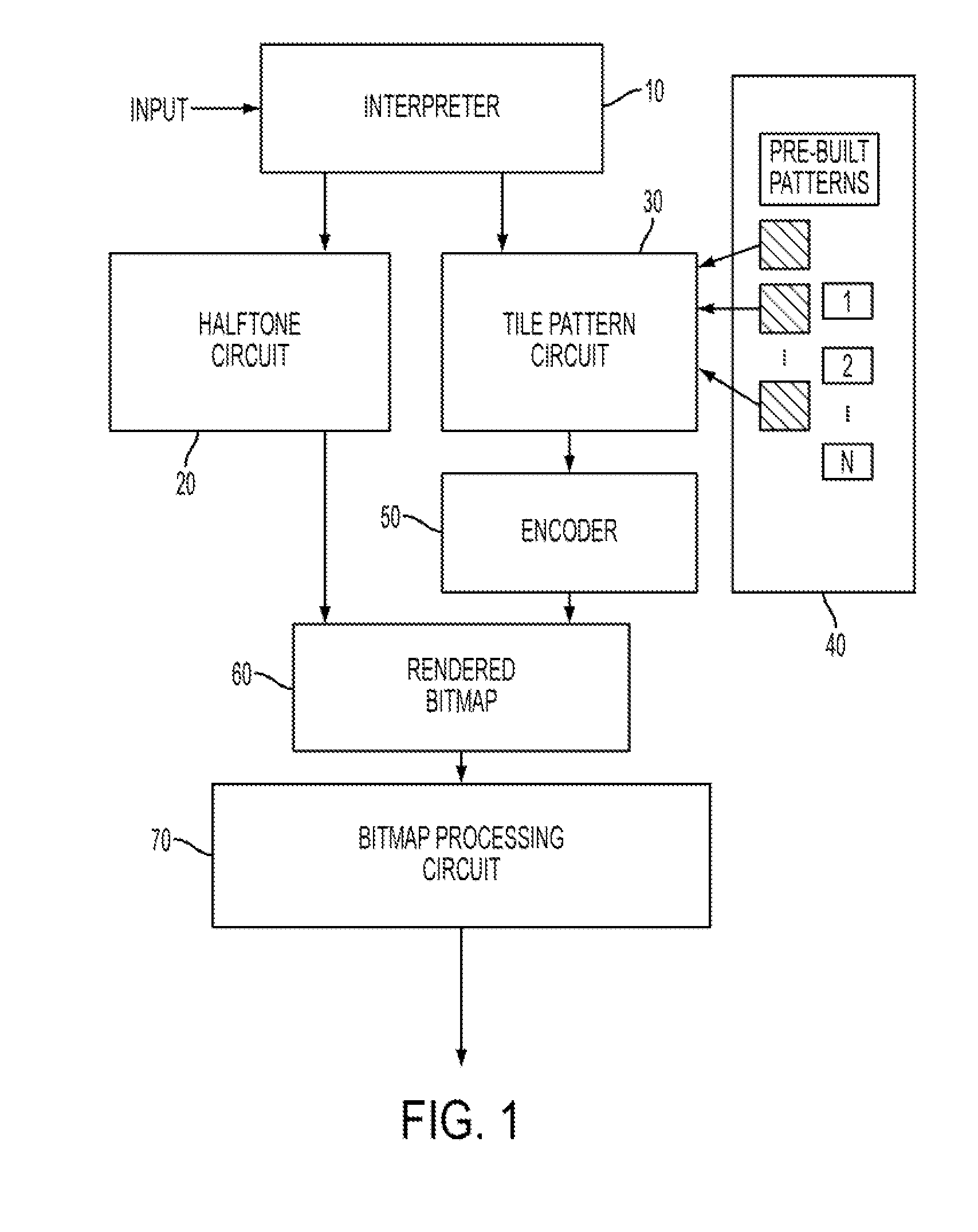Method and system for selective smoothing of halftoned objects using bitmap encoding
- Summary
- Abstract
- Description
- Claims
- Application Information
AI Technical Summary
Benefits of technology
Problems solved by technology
Method used
Image
Examples
Embodiment Construction
[0043]For a general understanding, reference is made to the drawings. In the drawings, like references have been used throughout to designate identical or equivalent elements. It is also noted that the drawings may not have been drawn to scale and that certain regions may have been purposely drawn disproportionately so that the features and concepts could be properly illustrated.
[0044]FIG. 1 shows, in schematic form, an image path of a reprographic system. The image path is a combination of hardware and software elements that generate and process the digital images.
[0045]As illustrated in FIG. 1, digital image data is input into an interpreter 10 that analyzes the image data to determine if the image data is picture image data or text / graphics image data. The interpreter 10 utilizes conventional image classification routines / circuitry or image segmentation routines / circuitry. An example of a conventional image classification routine / circuit is described in U.S. Pat. No. 5,765,029. T...
PUM
 Login to View More
Login to View More Abstract
Description
Claims
Application Information
 Login to View More
Login to View More - R&D
- Intellectual Property
- Life Sciences
- Materials
- Tech Scout
- Unparalleled Data Quality
- Higher Quality Content
- 60% Fewer Hallucinations
Browse by: Latest US Patents, China's latest patents, Technical Efficacy Thesaurus, Application Domain, Technology Topic, Popular Technical Reports.
© 2025 PatSnap. All rights reserved.Legal|Privacy policy|Modern Slavery Act Transparency Statement|Sitemap|About US| Contact US: help@patsnap.com



